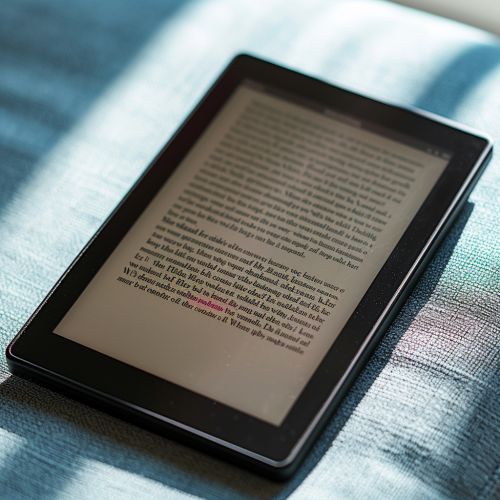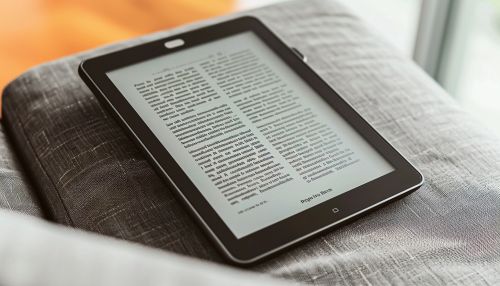E-book
Overview
An E-book or electronic book is a book publication made available in digital form, consisting of text, images, or both, readable on computers or other electronic devices. Although sometimes defined as "an electronic version of a printed book", many e-books exist without any printed equivalent. Commercially produced and sold e-books are usually intended to be read on dedicated e-reader devices. However, almost any sophisticated computer device that features a controllable viewing screen can also be used to read e-books, including desktop computers, laptops, tablets and smartphones.
History
The idea of an e-book or electronic book, was not conceived due to technology, digital text or e-readers. The concept of an e-book was in the mind of Bob Brown after watching his first "talkie" (movie with sound). In 1930, he wrote a book on this idea and titled it as "The Readies", playing off the idea of the "talkie". In his book, he predicted that the e-book would be the new revolution of reading and that it would bring an end to the era of paperback books.
Development
The development of e-books started in the early 1970s with Project Gutenberg, and the digitization of public domain works. While at first books were copied manually, the process was later automated. This effort is spearheaded by Michael S. Hart and is the oldest digital library. Hart believed that computers would one day be accessible to the general public and decided to make works of literature available for free. He created the first e-book on July 4, 1971, by typing the United States Declaration of Independence into a computer in plain text.
Formats
There are a huge variety of e-book formats, but some of the most common include EPUB, MOBI, AZW and PDF. Each format has its own advantages and disadvantages. The EPUB format is an open standard for e-books created by the International Digital Publishing Forum. It is designed for reflowable content, meaning that an EPUB reader can optimize text for a particular display device.
Reading devices
E-books can be read on a variety of devices including e-readers, tablets, smartphones and desktop computers. An e-reader, also called an e-book reader or e-book device, is a mobile electronic device that is designed primarily for the purpose of reading digital e-books and periodicals. Any device that can display text on a screen may act as an e-reader, but specialized e-reader devices may optimize readability, portability, and battery life for this purpose.
Production
The production of e-books has many stages. First, the book is written by the author, which makes it a manuscript. The author will work with an editor to improve the manuscript and prepare it for publication. Once the manuscript is ready, it is converted into an e-book format. This can be done by the author, by the publisher, or by a third-party company hired by the publisher.
Distribution
E-books are distributed in a variety of ways. Some are sold directly from the publisher's website, while others are sold through online retailers like Amazon, Barnes & Noble, and Kobo. Some e-books are available for free from public libraries, and others are available for free online through Project Gutenberg or Google Books.
Impact
The impact of e-books on the publishing industry has been significant. They have changed the way books are published, marketed, and sold. They have also changed the way people read. With an e-book, a reader can carry thousands of books on a single device, and can purchase and download new books instantly.
Future
The future of e-books is uncertain. Some predict that they will continue to grow in popularity, while others believe that they will never replace printed books. Regardless of what the future holds, it is clear that e-books have made a significant impact on the world of reading and publishing.
See Also


